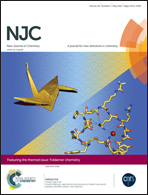Hyperhydrophilic three-dimensional crosslinked beads as an effective drug carrier in acidic medium: adsorption isotherm and kinetics appraisal
Abstract
Conventional drug delivery materials are known to provide slow and low drug loading in aqueous medium due to the hydrophobic or less hydrophilic properties of the carrier. However, the present study explored the synthesis of cheaply available metals modified with a hyperhydrophilic polymer. Hyperhydrophilic three-dimensional crosslinked beads as a drug carrier were synthesized with desirable properties that substantially influence the polymer efficiency. These synthesized polymers were characterized for surface area, particle size, acid content and morphology, and the metal modification was evaluated to obtain an efficient polymer for drug adsorption in an acidic medium. Contact time, which significantly affects drug adsorption was comparatively evaluated using the cheaply available metals, cobalt and nickel. Interestingly, an adsorption study revealed that gradual drug loading occurs during the initial 12 h. Afterwards, adsorption increases steadily and then stabilizes. Furthermore, theoretical predictions of adsorption, including Langmuir adsorption isotherm and pseudo order kinetics, were also evaluated. Remarkably, polymer supported Co/Ni demonstrated 85 and 78% metoprolol drug adsorption, respectively, at an optimum pH of 3 after 24 h. Langmuir adsorption isotherm revealed monolayer adsorption on the polymer supported Co/Ni. Pseudo first and second order kinetics were also evaluated and demonstrated the adsorption mechanism and equilibrium adsorption capacity, respectively.


 Please wait while we load your content...
Please wait while we load your content...